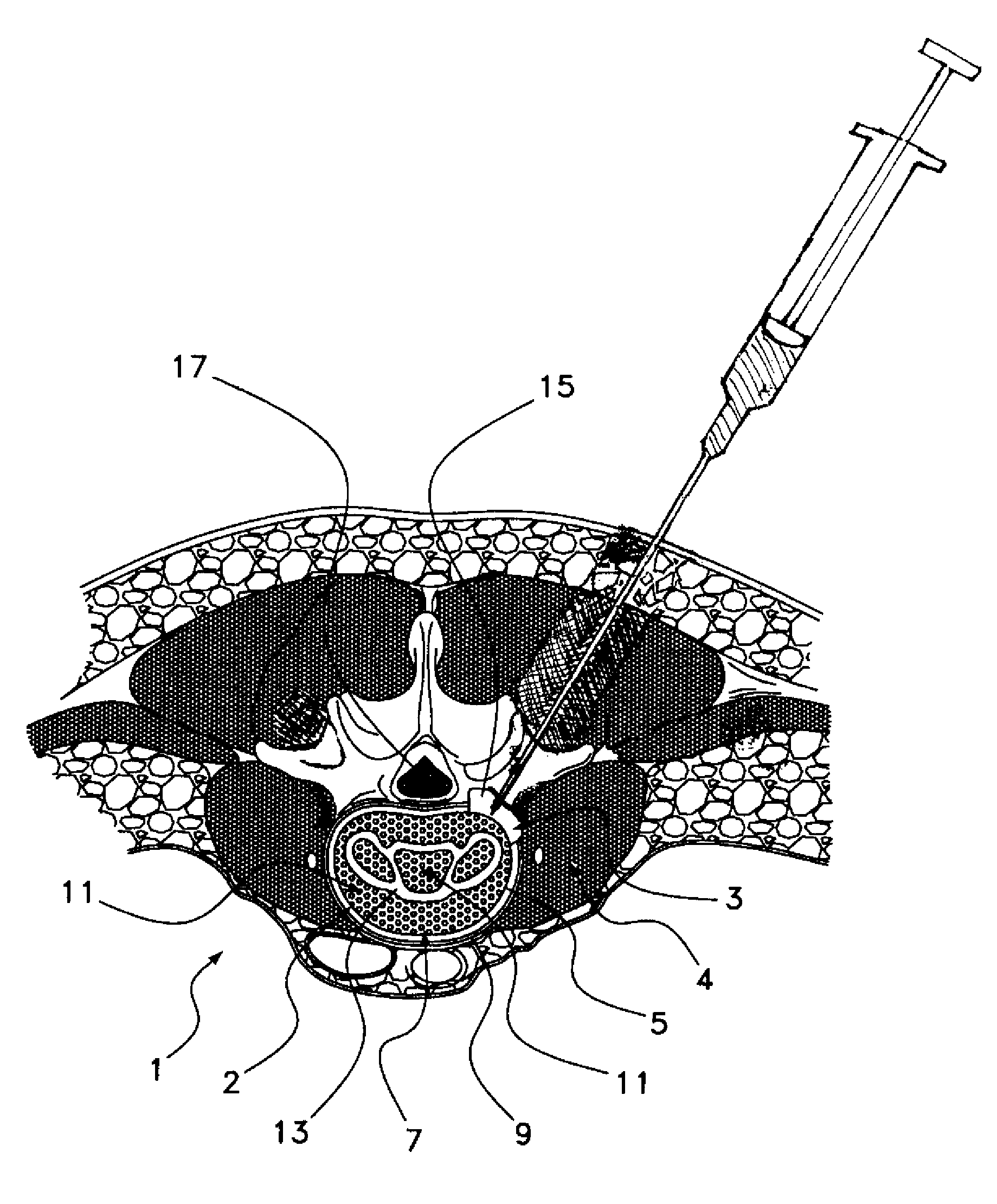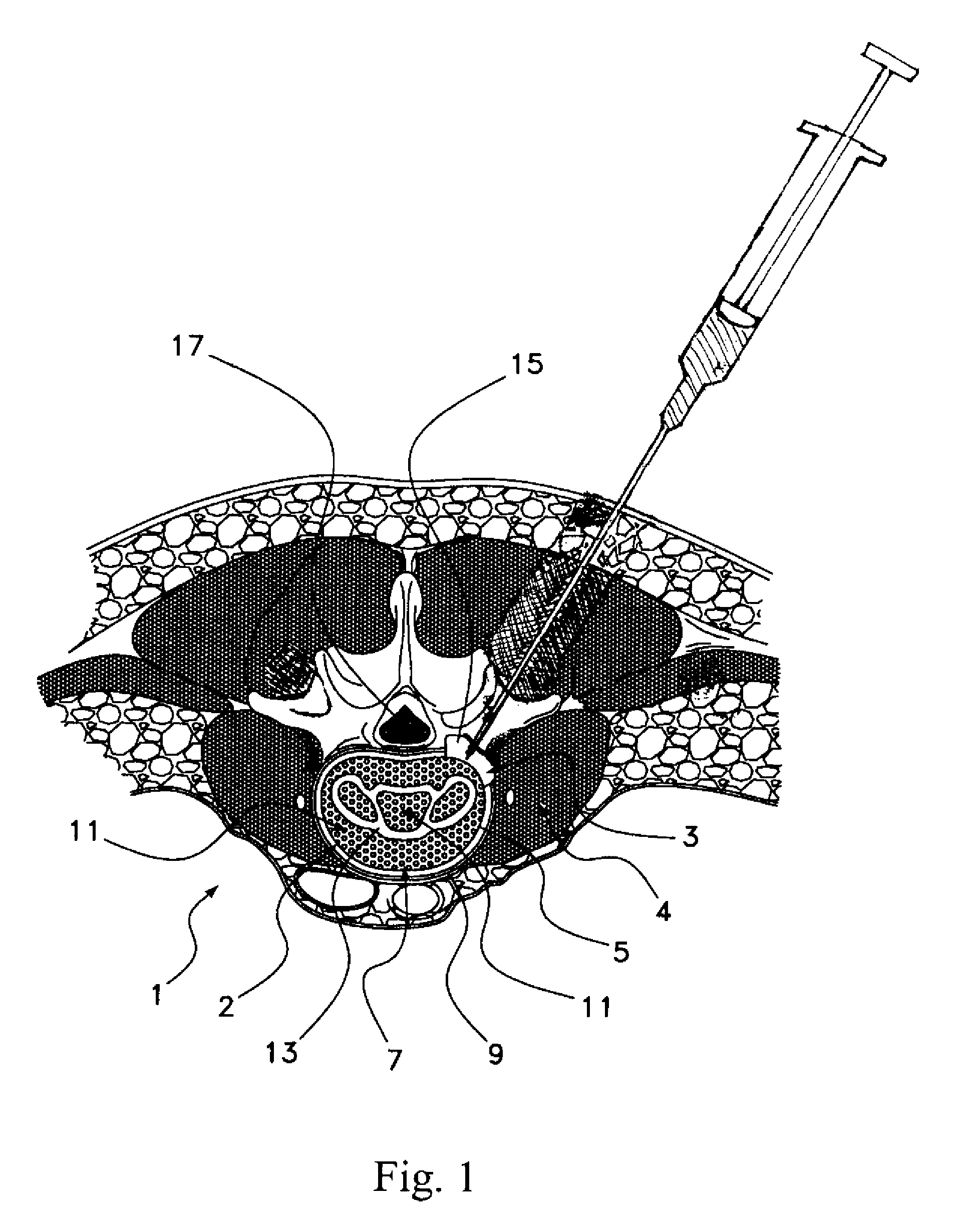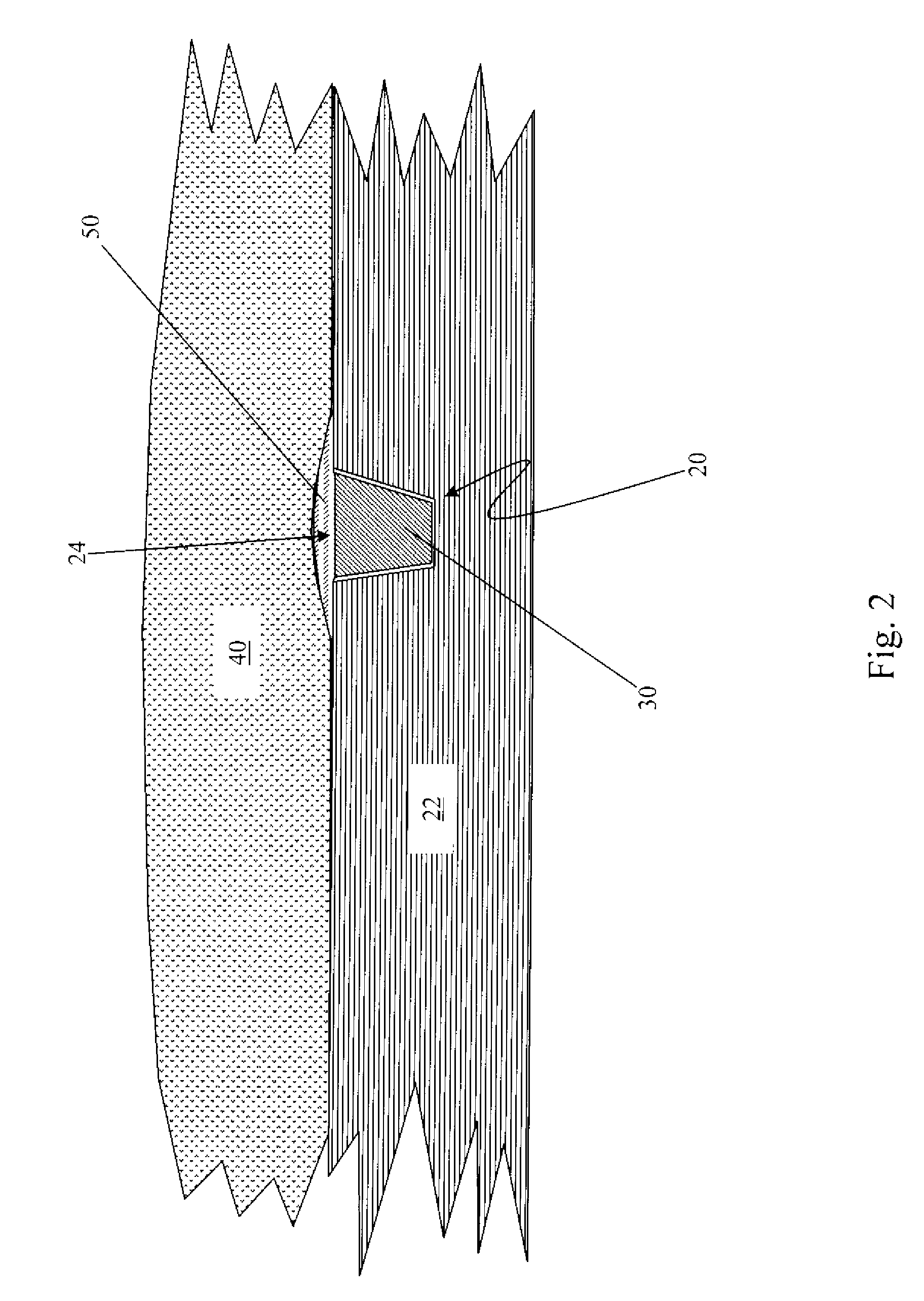Method of using an anti-growth matrix as a barrier for cell attachment and osteo-inductive factors
a technology of cell attachment and anti-growth matrix, which is applied in the direction of osteosynthesis devices, joint implants, prostheses, etc., can solve the problems of fibrosis, inability to carry out the slightest movement, and potential drawbacks of these kinds of spinal procedures, so as to prevent bone migration
- Summary
- Abstract
- Description
- Claims
- Application Information
AI Technical Summary
Benefits of technology
Problems solved by technology
Method used
Image
Examples
example
[0065]Having generally described methods for using a growth inhibiting matrix to benefit intervertebral disc procedures, the following specific example is offered for purposes of illustration and only for illustration. There is no intention to limit the invention from the following words.
[0066]A method for using a growth inhibiting matrix for interbody spinal fusion may be prepared and delivered as follows. Exposure of the posterior annulus of the disc space to be treated is first achieved. Then, a hole is cut in the annulus, and a volume of disc material is removed to allow for placement of bone graft or bone graft substitute and interbody fusion device(s). After placement of the interbody fusion device, a growth-inhibiting matrix is applied from a syringe just inside the annulus opening and around the hole through which the interbody device was implanted.
[0067]Another method of using the matrix of the present invention includes using the matrix to prevent unwanted migration of gro...
PUM
| Property | Measurement | Unit |
|---|---|---|
| volume | aaaaa | aaaaa |
| fluid-permeable | aaaaa | aaaaa |
| anti-adhesion | aaaaa | aaaaa |
Abstract
Description
Claims
Application Information
 Login to View More
Login to View More - R&D
- Intellectual Property
- Life Sciences
- Materials
- Tech Scout
- Unparalleled Data Quality
- Higher Quality Content
- 60% Fewer Hallucinations
Browse by: Latest US Patents, China's latest patents, Technical Efficacy Thesaurus, Application Domain, Technology Topic, Popular Technical Reports.
© 2025 PatSnap. All rights reserved.Legal|Privacy policy|Modern Slavery Act Transparency Statement|Sitemap|About US| Contact US: help@patsnap.com



